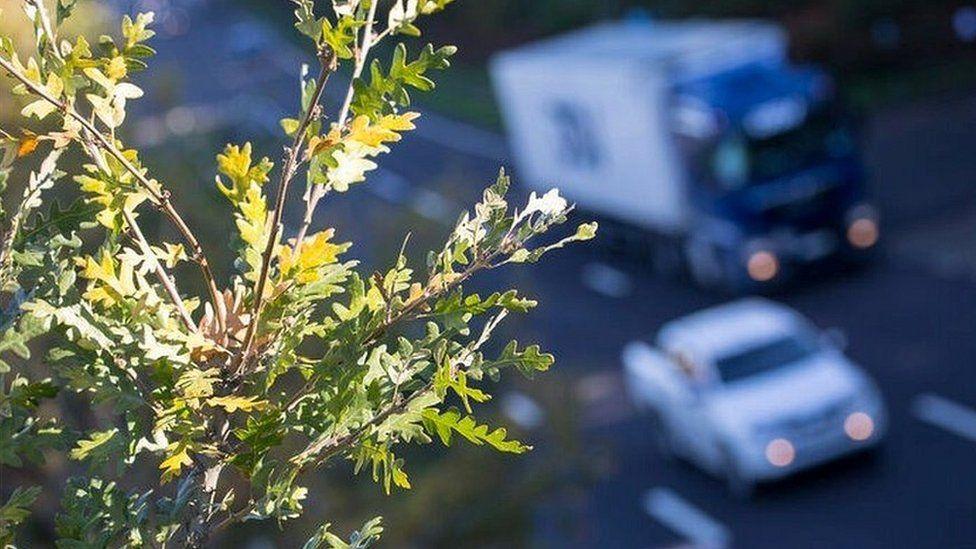The legacy of a £1.5bn A-road upgrade
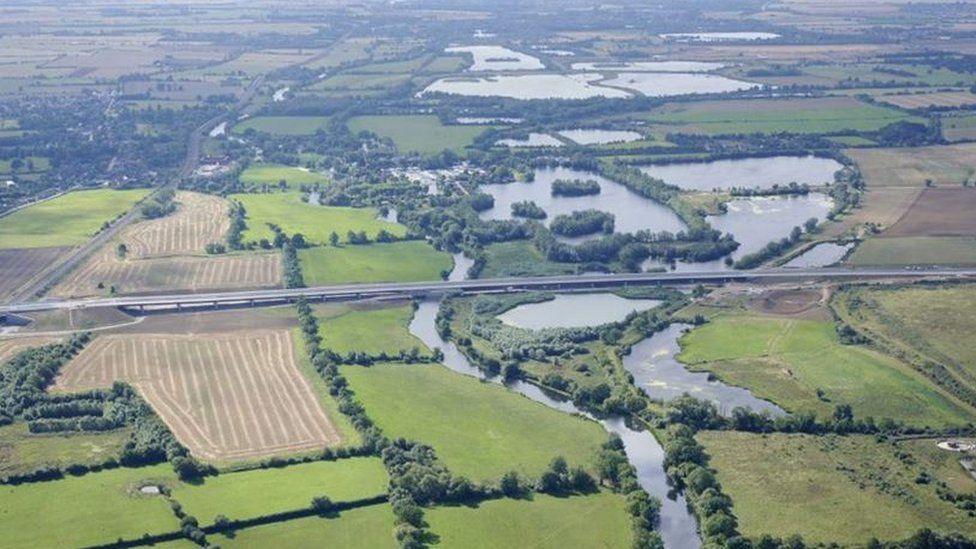
The re-routed Cambridge to Huntingdon A14 opened in 2020, although the scheme was not completed until 2022 with improved Huntingdon connections
- Published
For decades, a dual carriageway in Cambridgeshire was synonymous with slow-moving traffic, jack-knifed lorries and long, long delays.
That changed in May 2020, when the new A14 opened ahead of schedule, external, a12-mile (19km) Cambridge to Huntingdon three-lane carriageway.
More than five years after the £1.5bn road improvement scheme was completed, what do locals think - and what is its legacy?

Stuart Gibbons, co-founder of Le Mark, no longer has to factor in delay times when using the A14
"Driving to Stansted Airport could potentially be a two-hour trip, just to get there for a pick-up or drop off - now it's a 45-minute journey," said Stuart Gibbons.
The co-founder of Le Mark, a Huntingdon-based company, is a huge fan of the improvements.
"We are a business that is rural, we're in a nice part of the county, but we need to get up and down the motorways when we need to," he said.
The company produces tapes, custom-printed labels, professional dance floors and crew-wear for the entertainment industry, including TV, touring bans, theatre, stage and performance.
It buys and sells internationally, which is why getting to Stansted Airport is so important.
But Mr Gibbons can also confidently tell customers in north London that Le Mark can drop off items within an hour and a half.
"The difference is we can make an appointment we are fairly certain we can meet," he said.

Heidi Brown no longer has to take alternative routes to get to work
Heidi Brown has been working for Le Mark for three years - and commuting along the A14 for much longer than that.
The upgraded road has transformed her journey to work.
"Historically, it was quite a lot of congestion, it wasn't the easiest of journeys - I'd often have to find alternative routes to work," the purchasing assistant said.
"Now I can confidently leave knowing I can get to work and I don't have to allow more time in advance."
Her colleague, social media content creator Charlotte Brooks, agreed, adding: "I'd hear [the old A14} a lot near our house, but it's a lot better now, much more quiet."

Recently elected councillor Luis Navarro is in regular contact with National Highways over a "settling bridge" at the A14's Bar Hill junction
"It's a hugely important bridge, the level of vehicles using this bridge is massive - from villages like Oakington, Cottenham, Longstanton and Willingham," said Luis Navarro.
The newly elected Liberal Democrat county councillor has found himself negotiating with National Highways over settling embankments on land around the Bar Hill bridge at junction 25.
The new layout there was part of the A14 project, but now locals are saying they feel a bump when they drive over it and Mr Navarro is "concerned it could become a hazard".
"The technical term is the bridge is 'settling' and National Highways have now attached monitoring devices to it, to provide data on how fast or if the bridge is still settling," he said.
"It's important we are on top of this issue... it's a major artery and the idea is we try to get a permanent solution to reassure drivers that it's safe."
A National Highways spokesperson said it had been monitoring the bridge for more than a year, initially with inspections by engineers.
"This has now been enhanced to include digital monitoring," they said.
"This is part of a phased assessment process as we continue our work with Cambridgeshire County Council to determine the root cause and put an appropriate solution in place."
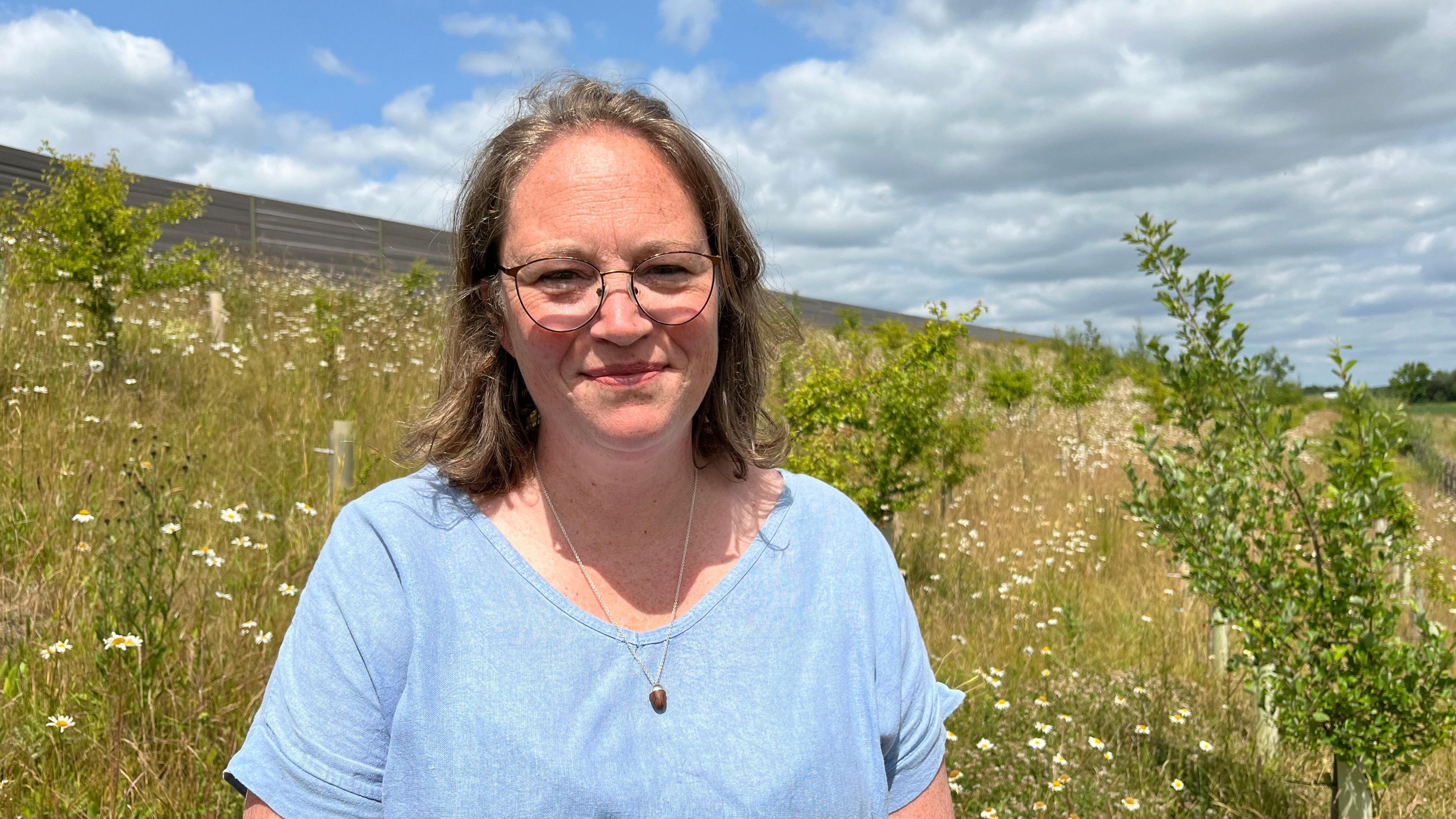
Vhari Russell has planted 150 of her own trees along the route near her village, where a thick hedgerow used to stand
About 270 hectares (670 acres) of habitat, including 40 native tree and shrub species, was created for wildlife along the new section of the A14, which realigned the dual carriageway south of Huntingdon.
Locals say the tree screen will be vital to mitigate against noise from the road.
However, National Highways said in 2022 about 20 to 30% of the trees had died, although all have been replanted.
It has since planted another 165,000 trees and shrubs, 90% of which have survived.
Vhari Russell, who founded the rewilding group Creating Nature's Corridors and with her family, lives close to the A14 in Brampton.
They took matters into their own hands by planting their own trees.
"What we're really lacking is the mulching and the watering and the nurturing and that wasn't done by National Highways," she said.
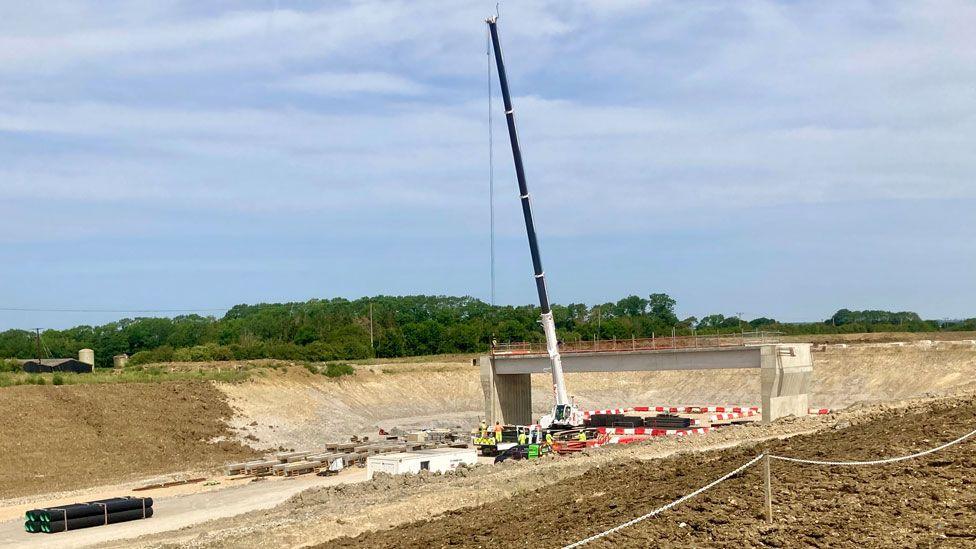
The government agency is now working on the £1bn A428 stretch from Caxton Gibbet to the Black Cat roundabout
Paul Salmon has been working on the latest National Highways infrastructure project in Cambridgeshire, from Caxton Gibbet to the Black Cat roundabout in Bedfordshire, for more than three years.
The £1bn A428 project includes a new 10-mile (16km) dual carriageway, as well as bridges and junctions connecting to the existing road.

Paul Salmon, senior project manager with National Highways, says the scheme has learned lessons from what worked and what did not on the A14
"Everyone locally knows about the Black Cat junction, it's infamous for multiple reasons and has been a pinch point - including the last single carriageway on this east-west corridor between Milton Keynes and Felixstowe," he said.
"And we will move that traffic off the local road.
"Currently it's about 35,000 vehicles on the A428 a day, and by the time the new road opens, it'll be down to about 3,000 a day."
The agency and its partner Skanska have spent time working out "the good, the bad and the indifferent" of the A14 project, the senior project manager added.
"For this project, we're top-soiling early, so it'll be green by the time the scheme opens," he said.
Get in touch
Do you have a story suggestion for Cambridgeshire?
Follow Cambridgeshire news on BBC Sounds, Facebook, external, Instagram, external and X, external.
- Published19 June
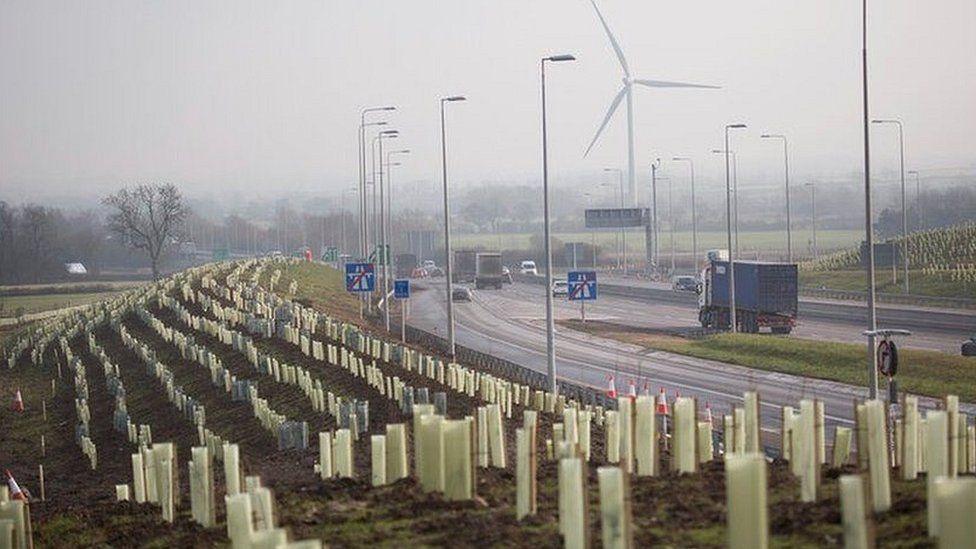
- Published17 June
